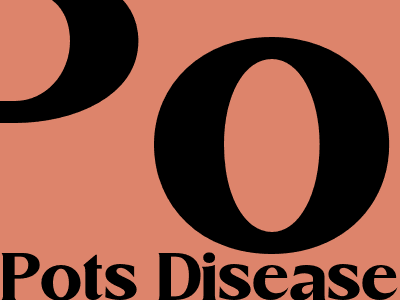Pots Disease: A Comprehensive Guide
Understanding the Basics
Pots disease, also known as Pott's disease, is a rare form of tuberculosis (TB) that affects the spine. It is caused by a bacterial infection that spreads from the lungs to the bone tissue in the spine. This can lead to inflammation, damage, and deformity of the vertebrae, resulting in severe pain, nerve damage, and paralysis if left untreated.
Pots disease is a serious condition that requires prompt medical attention. Early diagnosis and treatment are essential to prevent complications and ensure the best possible outcomes.
Causes and Risk Factors
The primary cause of Pots disease is a bacterial infection with Mycobacterium tuberculosis, the same bacterium that causes TB in the lungs.
Risk factors for developing Pots disease include:
- Weakened immune system due to HIV/AIDS, diabetes, or chemotherapy
- Previous history of TB infection li>Contact with someone who has active TB
- Living in or traveling to areas with high TB rates
Symptoms and Diagnosis
People with Pots disease may experience various symptoms, including:
- Back pain that worsens at night or with movement
- Muscle weakness or numbness in the legs
- Loss of bladder or bowel control
- Fever, weight loss, and night sweats
- Kyphosis (hunchback) or other spinal deformities
Diagnosis of Pots disease involves a combination of physical examination, blood tests, imaging studies (such as X-rays, MRI, or CT scans), and sometimes, a biopsy of the affected bone or tissue.
Treatment and Management
The primary treatment for Pots disease is a prolonged course of antibiotics, typically lasting for 9-12 months.
In some cases, surgery may be necessary to stabilize the spine, relieve pressure on the spinal cord, or drain infected areas.
Additional treatment measures may include:
- Pain medication
- Physical therapy to improve mobility and reduce pain
- Occupational therapy to assist with daily activities
- Lifestyle modifications, such as weight management and smoking cessation
Complications and Prevention
Untreated Pots disease can lead to serious complications, including:
- Vertebral collapse and spinal deformity
- Paralysis or other nerve damage
- Chronic pain or disability
- Spread of infection to other organs
Prevention of Pots disease involves controlling the spread of TB through:
- Vaccination with the BCG vaccine
- Early detection and treatment of active TB infections
- Implementing infection control measures in healthcare settings
- Improving socioeconomic conditions to reduce TB transmission
Conclusion
Pots disease is a serious spinal infection caused by TB. It requires prompt diagnosis and treatment to prevent complications. Early intervention, including antibiotic therapy and potential surgery, is crucial for successful management and improved outcomes.
Understanding the causes, symptoms, and available treatment options can help individuals and healthcare professionals effectively address Pots disease and ensure the well-being of affected individuals.

Comments